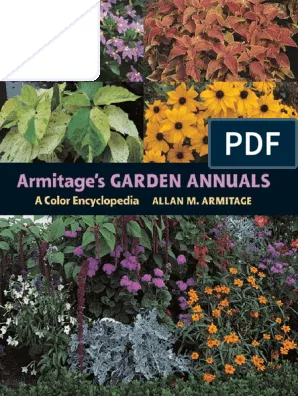A Guide to Variegated Plants Well-Suited for Florida Gardens
If you’re looking to add some visually interesting foliage to your Florida landscape, variegated plants should be at the top of your list. Their patterns of white, yellow or pink stripes and blotches make them stand out beautifully amongst other greenery. As an added bonus, many variegated varieties adapt wonderfully to the Sunshine State’s hot and humid climate.
In this article, I’ll explain what variegation is, highlight some top variegated plant options for Florida, and provide care tips to help them thrive. By the end, you’ll have the knowledge to transform your yard into an eye-catching oasis using these unique foliage all-stars.
What is Variegation?
Variegation refers to patterns of color that differ from a plant’s normal leaf color. It’s caused by a genetic mutation that prevents some areas of leaves from producing chlorophyll, resulting in white, cream, yellow or pink hues. While lacking chlorophyll’s green pigment, variegated sections still perform photosynthesis using neighboring green tissues.
The patterns of variegation can vary greatly between different plants. Some have neat white edges, while others show splotches or marbling throughout the leaf. Generally, variegated cultivars require a bit more care than their solid green counterparts due to having less efficient photosynthesis. But many still thrive with a little TLC.

Top Variegated Plant Choices for Florida
Here are some top-rated variegated plant options specifically suited to Florida’s climate:
- Mandevilla: These trailing vines explode with color all season. ‘Alice du Pont’ has bold pink flowers set against cream and green leaves. ‘Sun Parasol’ boasts solid red blooms and white-splashed foliage.
- Plumbago: Masses of blue flowers dance above leaves splashed in cream or yellow on cultivars like ‘Mona Lavender’ and ‘Floribunda’. Heat and humidity bring out plumbago’s best.
- Hibiscus: Big blossoms in red, pink, yellow or white complement the variegated leaves of cultivars such as ‘Snowflake’, ‘Panama Pink’ and ‘Donald Boehm’.
- Elephant Ear: Large, elephant-like leaves with cream edges make ‘Caramel’ and ‘Pirate’s Gold’ statement landscape plants. Their giant size means easy viewing from a distance.
- Silver Buttonwood: From personal experience, I’ve found its small cream-centered leaves hold up great to Florida storms. It brings elegance to any landscape.
Those are some top picks, but many other variegated beauties like coleus, impatiens and caladium also take well to Florida conditions with the right care.
Tips for Growing Variegated Plants in Florida
While variegated plants love our climate, they do have somewhat specific needs compared to all-green counterparts. Here are some tips I’ve learned that have basically helped my variegated beauties thrive:
- Provide afternoon shade, as variegated leaves can scorch more easily in full sun. But they still need morning sun for optimal coloring.
- Check soil moisture frequently, as variegation makes it difficult for leaves to regulate water. Water deeply when top few inches are dry.
- Fertilize monthly in growing season with product for foliage plants. Variegation limits ability to absorb nutrients from soil.
- Prune off any all-green reversions that may appear, as these steal energy from variegated portions.
- Protect from harsh winds and rainfall, which can damage delicate variegated foliage.
- Use mulch to regulate soil temperatures. Variegated plants favor roots that are not too hot or cold.
Following these basic care steps should help your variegated beauties reach their full potential, despite any challenges from their lovely leaf patterns. With a little effort, they’ll reward you with amazing color all year long.

From my experience, variegated plants can be harder to grow than solid green varieties. But seeing those unique patterns really makes the extra TLC worth it. The creamy white and gold accents they provide make a garden pop. It’s like getting a whole new level of visual interest for free!
There are so many great variegated options beyond what I covered too. Caladiums, coleus and impatiens also come in fun patterns. Not to mention tropicals like red banana trees and bird of paradise. Varieties are popping up all the time.
If you’re willing to put in a bit more effort for watering and shade, investing in some variegated plants could totally transform your Florida landscape. They lend such a unique sophistication compared to plain green plants. With the right care and placement, those eye-catching patterns will shine and reward you with beauty all year long.
Variegated or not, it’s amazing how much just adding a few colorful new additions to vegetate areas can perk up a whole property. Those splashes of white, yellow or pink against green backgrounds never fail to elicit comments from neighbors and passersby. “Your yard is looking stunning this year,” they’ll say. And it’s true – variegated plants have that power to stun with their natural artistry.

Does adding variegation to your Florida garden sound appealing? I’d be happy to offer any other plant suggestions or care tips based on your landscape needs. Feel free to reach out if you have additional questions after reading this guide. With a little research and trial and error, you’re sure to find some variegated plants that brighten up your space for years to come.
Top 10 Variegated Plants for Florida Gardens
| Plant | Light Needs | Care Level | Height/Spread | Flower Color |
|---|---|---|---|---|
| Chinese Evergreen | Medium | Low | 2-3ft/2-3ft | White |
| Peperomia | Medium-Low | Low | 8-12in/12in | None |
| Ceanothus | Full Sun | Low | 3-6ft/3-6ft | Blue |
| Diffenbachia | Medium | Low | 2-4ft/2-4ft | None |
| Polka Dot Plant | Medium | Low | 1-2ft/1-2ft | White |
| Petmia | Medium | Low | 6-12in/12in | Pink |
| Caladium | Medium | Low | 1-2ft/1-2ft | Pink/White/Red |
| Peperomia Obtusifolia | Low | Low | 6-12in/12-18in | None |
| Heartleaf Philodendron | Low-Medium | Low | 3-6ft/3-6ft | None |
| Wandering Jew | Medium | Low | 6-12in/Spreading | Pink/White/Blue |
FAQ
-
What kind of plants grow well in Florida?
Floridas climate is perfect for all sorts of tropical plants. Basically any plant that loves heat, humidity and sunlight will do amazing in Florida. Palms, hibiscus, bougainvillea and orchids are some favorites.
-
Do variegated plants do okay in the Florida heat?
Variegated plants, which have streaks or patches of bright white or yellow on their green leaves, can kind of struggle in the summer heat. However many variegated kinds thrive with just a little extra care and shade. Apparently bush lantana, hydrangeas and elephant ears do surprisingly well despite their variegated leaves.
-
How do I care for variegated plants in Florida?
The top things for variegated plants in Florida are providing some relief from the harsh sun, keeping them well watered, and using mulch. Strong sunlight can scorch their paler leaves. Another issue is that hot weather causes them to dehydrate faster than plain green plants. Placing them in partial shade and watering regularly seems to do the trick.

-
Are variegated plants more prone to pests or diseases?
It’s kind of believed that variegated plants may be slightly more vulnerable to issues like scale, aphids and fungal diseases. The thinking is that stresses from temperature extremes or lack of proper care can weaken their natural defenses. On the other hand, many gardeners claim their variegated plants stay just as healthy as solid colored ones with preventative spraying and diligent inspection. Who’s right, I don’t really know for sure! Maybe both sides have a point.
-
Can variegated plants be propagated from cuttings?
Most variegated plants can be propagated, so long as the cutting contains some of the colorful markings. It’s best to take stem cuttings in spring or early summer from new growth. Removing four to six leaves and burying the stem works well. Strong rooting hormone powder or liquid will help, too. Preserve the plant’s variegation by selecting cuttings with the distinctive white or yellow patterns – that’s the advice of experts.
-
Do all variegated plants increase in value over time?
Not necessarily. While certain rare or collector’s variegated plants gain value as they mature, other types hold their worth or even lose it. Their appeal is largely based on aesthetic, not financial factors. But you never know – perhaps that funky variegated schefflera you started from a $10 home depot cutting will be sought after in a few years! There’s no harm in nurturing plants you find beautiful, regardless of potential profits down the road.
